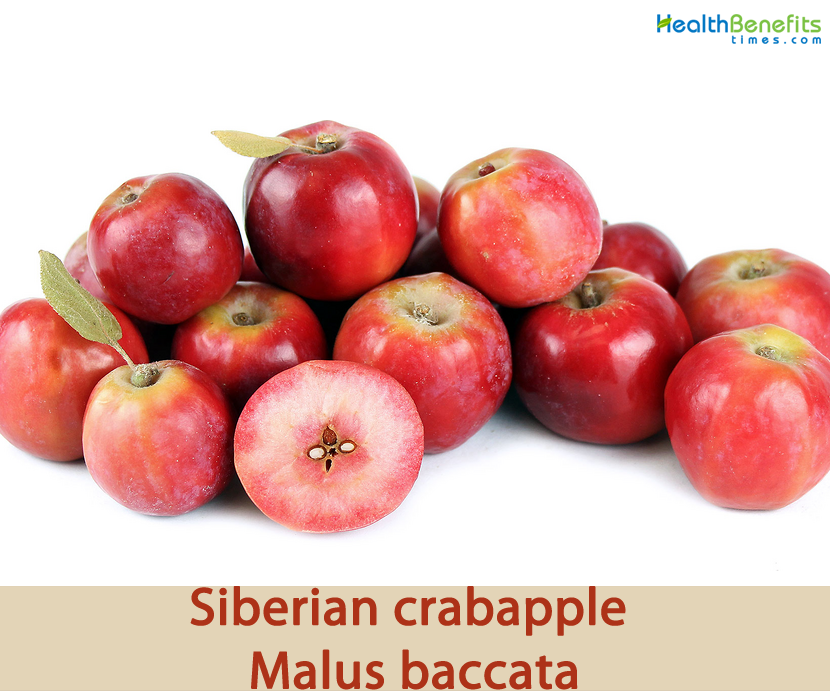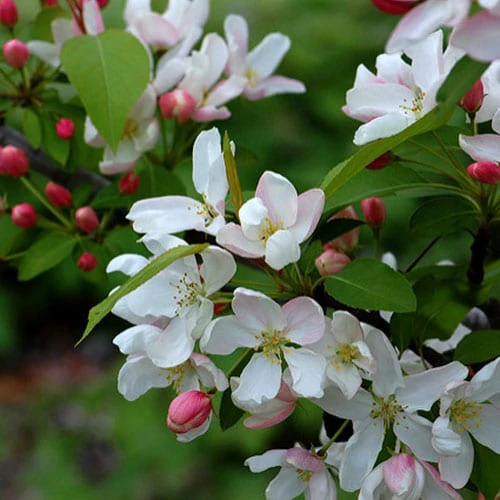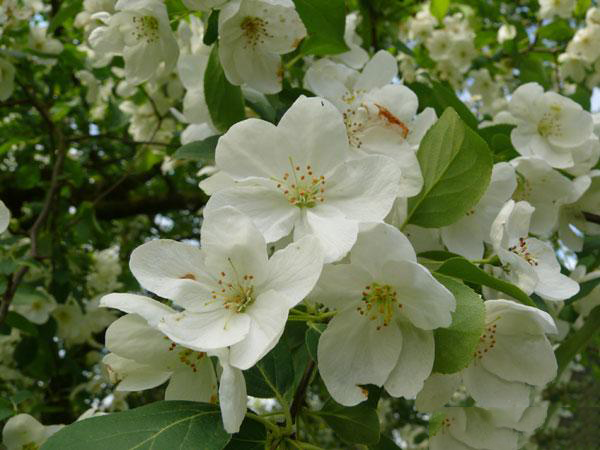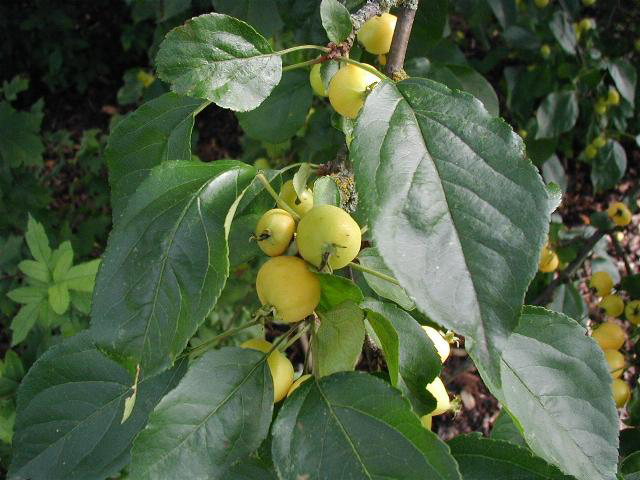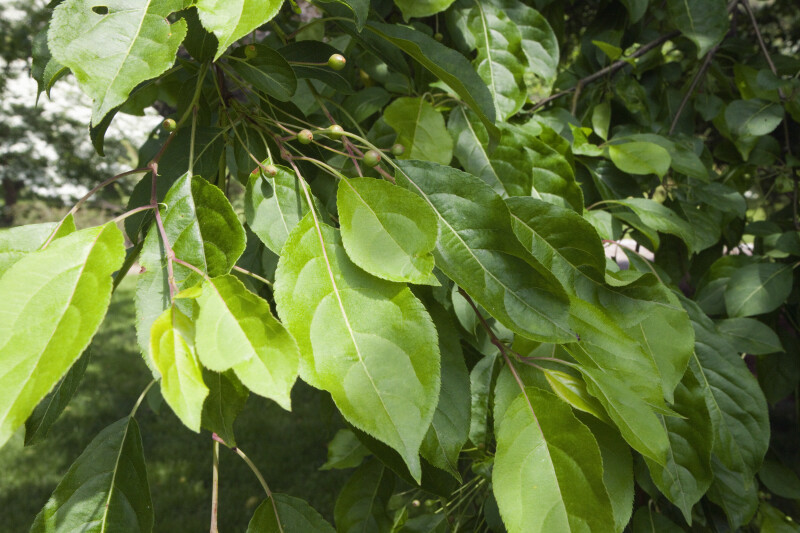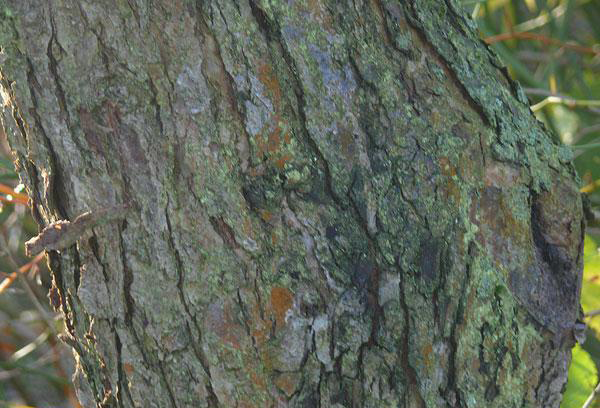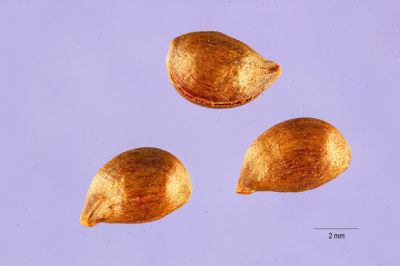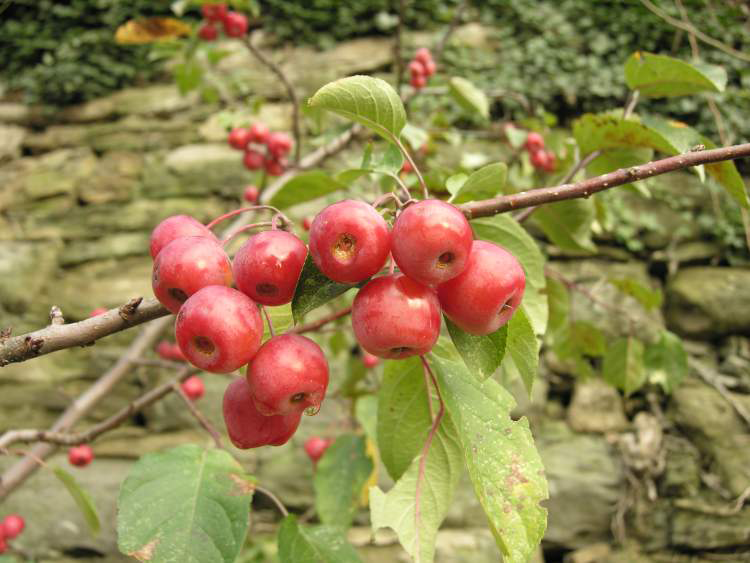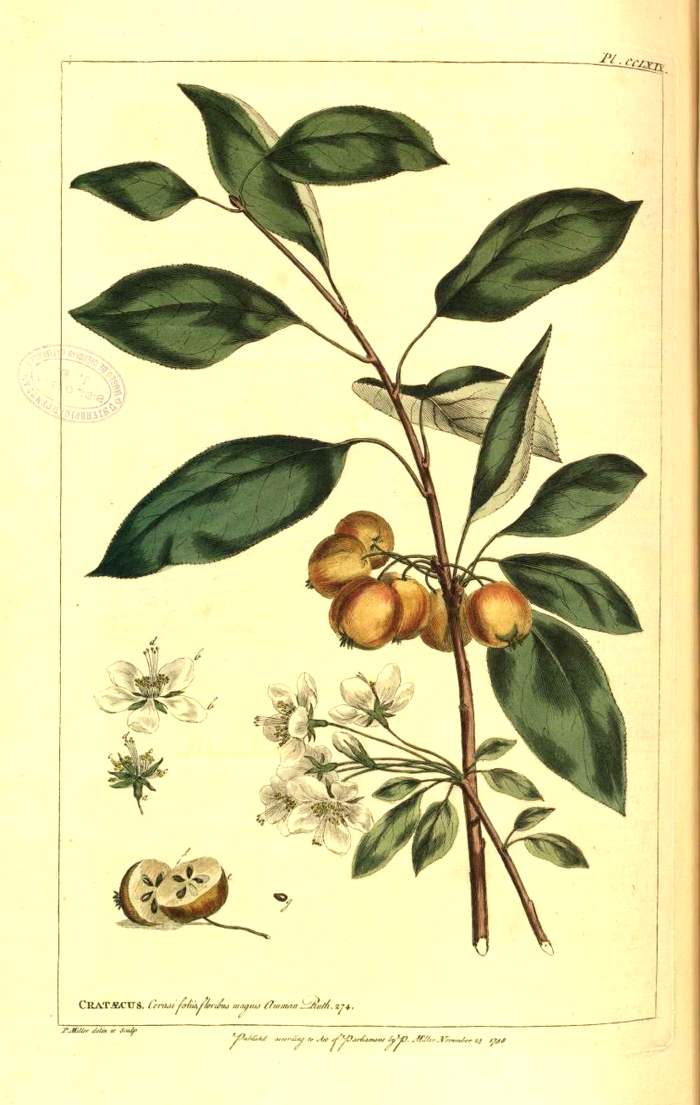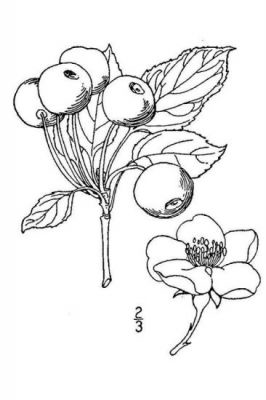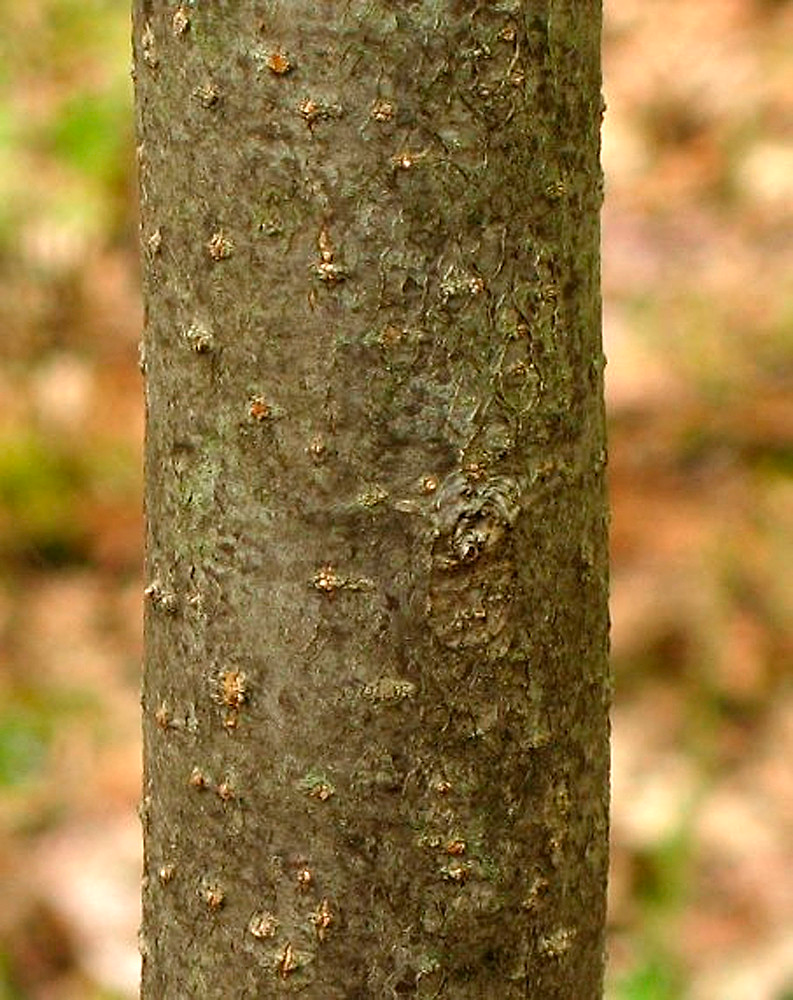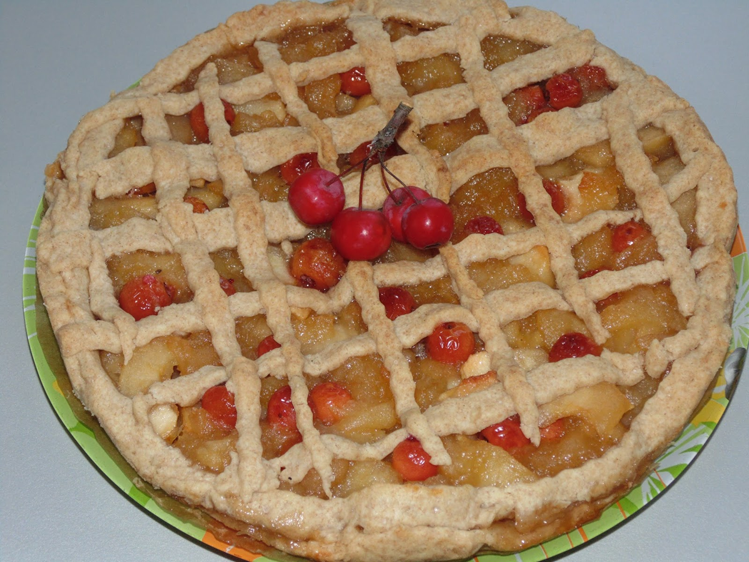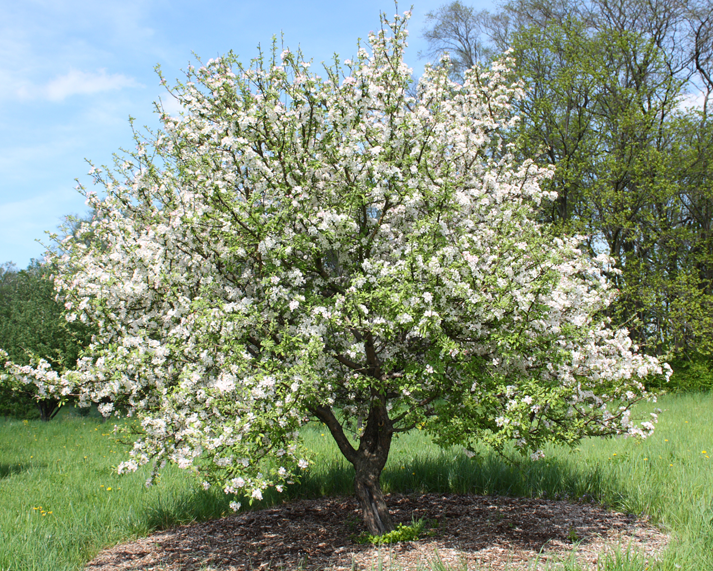| Siberian crabapple Quick Facts | |
|---|---|
| Name: | Siberian crabapple |
| Scientific Name: | Malus baccata |
| Origin | Russia, Mongolia, China, Korea, Bhutan, India and Nepal |
| Colors | Initially green turning to red to yellow as they mature |
| Shapes | Spherical, only about 1 cm (0.4 in) in diameter; they form dense clusters and resemble cherries from a distance |
| Taste | Very astringent, tart taste |
| Health benefits | Support for headaches, dysentery, diarrhea and many other ailments. |
| Name | Siberian crabapple |
|---|---|
| Scientific Name | Malus baccata |
| Native | Russia, Mongolia, China, Korea, Bhutan, India and Nepal. The tree is found in Japan, and it has also been introduced to Europe and to North America, where it is found in the wild mostly in the Great Lakes Region and in the Northeastern United States. |
| Common Names | Siberian crab apple, Siberian crab, Chinese Crab Apple, Flowering crabapple, Chinese Crab, Manchurian crab apple |
| Name in Other Languages | Arabic: Tufaah tuti (تفاح توتي) Azerbaijani: Giləmeyvəli alma Bulgarian: yagodova yabŭlka (ягодова ябълка), yagodoplodna yabŭlka (ягодоплодна яблълка) Chinese: Lin qin zi, Shan jing zi (山荆子), Shan jiang zi Croatian: Sibirska jabuka Czech: Jabloň drobnoplodá Danish: Bæræble, Bær-Æble Dutch: Kersappelboom English: Siberian crab apple, Siberian crab, Chinese Crab Apple, Flowering crabapple, Chinese Crab Estonian: Ida-mariõunapuu Finnish: Marjaomena, Marjaomenapuu. French: Pommier de Sibérie, Pommier sibérien, Pommier à baies, pommier microcarpe de Sibérie, pommier à petits fruits German: Beeren-Apfel, Kirschapfel, Beerenapfelbaum, Kirschapfelbaum, sibirischer Wildapfel, Osagedorn Hindi: Ban mehal, Mailas baikāṭā (मैलस् बैकाटा) Hungarian: Bogyós díszalma, Malus baccata Italian: Melo di Siberia Japanese: Siberya koringo, Shiberiaringo (シベリアリンゴ) Korean: Yag wang na mu (야광나무) Lao: Malus baccata Latvian: Og Malayalam: Mālas bakkāṭṭa (മാലസ് ബക്കാട്ട) Nepali: Koma, Kumbulin Netherlands: Appelboom, kers Norwegian: Bæreple, Småeple Persian: مالوس باکاتا Polish: Jabłoń jagodowa Russian: Yablonya yagodnaya (Яблоня ягодная), Iablonia sibirskaia, Âblonâ âgognaâ, Âblonâ Sibirskaâ, yablonya Pallasa (яблоня Палласа), yablonya sibirskaya (яблоня сибирская), yablonya khamardabanskaya (яблоня хамардабанская), yablonya yagodnaya (яблоня ягодная) Slovak: Jabloň malvičkatá Slovakian: Jabloň malvičkatá Spanish: Manzano Swedish: Bärapel Turkish: Sibirya çiçek elması Ukrainian: Yablunya yahidna (Яблуня ягідна), yablunya pallasa (яблуня палласа), yablunya sybirsʹka (яблуня сибірська ) Vietnamese: Táo dại Siberi |
| Plant Growth Habit | Upright, deciduous, broad-rounded, flowering crabapple tree |
| Growing Climates | Open forested areas, Mixed forests on slopes, among shrubs in valleys, Mesic thickets and riparian zones |
| Soil | Succeeds in most fertile soils including heavy ones, preferring a moisture retentive well-drained loamy soil. Prefers a sunny position but succeeds in partial shade |
| Plant Size | Usually grows 5 – 10 metres tall, sometimes reaching 14 metres. The short bole can be up to 30cm in diameter |
| Branchlets | Branchlets reddish brown, glabrous |
| Buds | Reddish brown, ovoid, scales tomentose at margin |
| Leaf | Elliptic or egg-shaped, 3-8 cm (1.18 –3.15 in) long and 2- 3.5 cm (0.79–1.38 in) wide. It is very slightly hairy when young, base cuneate or rounded apex acuminate and margin serrate |
| Flowering season | April to May |
| Flower | Pedicels are slender and 1.5–4 cm (0.59–1.57 in) long. They bear white fragrant flowers of 3–3.5 cm (1.2–1.4 in) in diameter which groups by 4–6. Petals are white and egg-shaped, approximately 2–2.5 cm (0.79–0.98 in) long |
| Fruit Shape & Size | Spherical, only about 1 cm (0.4 in) in diameter; they form dense clusters and resemble cherries from a distance |
| Fruit Color | Initially green turning to red to yellow as they mature |
| Varieties |
|
| Propagation | By seed |
| Taste | Very astringent, tart taste |
| Lifepan | Around 30–40 years |
| Season | September–October |
Plant Description
Siberian crabapple is an upright, deciduous, broad-rounded, flowering crabapple tree with arching or pendulous branches forming a rounded, wide-spreading canopy. The tree usually grows 5 – 10 meters tall, sometimes reaching 14 meters. The short bole can be up to 30 cm in diameter. The plant is found growing in open forested areas, mixed forests on slopes, among shrubs in valleys, mesic thickets and riparian zones. The plant succeeds in most fertile soils including heavy ones, preferring a moisture retentive well-drained loamy soil. It prefers a sunny position but succeeds in partial shade. The plant has arching or overhanging red-brown branches and red-brown buds.
Leaves
Leaves are elliptic or egg-shaped, 3-8 cm (1.18 –3.15 in) long and 2- 3.5 cm (0.79–1.38 in) wide. It is very slightly hairy when young, base cuneate or rounded apex acuminate and margin serrate. Petioles are 2–5 cm (0.8–2.0 in) long, with few glands and fine hairs. No appreciable fall color, with early fall leaf drop common.
| Bud Arrangement | Alternate |
| Bud Color | Reddish-brown, with several imbricate scales |
| Bud Size | 1/8 to 1/4 inch long. |
| Leaf Type and Shape | Simple, elliptical |
| Leaf Venation | pinnate, brachidodrome |
| Leaf Margins | Finely-serrate to irregularly-toothed or lobed |
| Leaf Surface | Essentially glabrous |
| Leaf Length | 1 to 3¼ inches |
| Leaf Width | 1 to 2½ inches |
| Leaf Color | Dark or olive-green above, paler green beneath; yellow fall color. |
| Fall Color | Yellow |
| Fall Characteristics | Not showy |
Flower
Pedicels are slender and 1.5–4 cm (0.59–1.57 in) long. They bear white fragrant flowers of 3–3.5 cm (1.2–1.4 in) in diameter which groups by 4–6. Petals are white and egg-shaped, approximately 2–2.5 cm (0.79–0.98 in) long. Flowering normally takes place in between April to May.
| Flower Type | Umbel or corymb-like racemes |
| Flower Color | White |
| Fruit Type | A 1/4 to 1/3 inch (pea-sized) pome with deciduous calyx |
| Fruit Color | Yellow, often with reddish blush |
| Fruit Characteristics | Attracts squirrels/mammals; showy; fruit/leaves not a litter problem |
Fruit
Fertile flowers are followed by tiny red or yellow spherical crabapples which ripen in fall. They are only about 1 cm (0.4 in) in diameter; they form dense clusters and resemble cherries from a distance. Small ones may be yellow, often with a reddish blush, or a glossy red. Small ones may stay on the tree all through the winter. Larger ones may also be pale yellow with bright red flushes, sometimes with a blue bloom. Fruit is edible for humans. Birds are attracted to the fruit.
Traditional uses and benefits of Siberian Crabapple
- The paste of the fruit is applied to the forehead to relieve headaches.
- The plant is used in a treatment for dysentery and diarrhea and also a source of the antibiotic, phloretin.
Culinary Uses
- Fruit can be consumed raw or cooked.
- It is often dried for winter use and also makes an excellent jelly.
- They make excellent jelly, jam, and sauce, and have traditionally been used in cider.
Other Facts
- The plant can be used as a rootstock for apple cultivars.
- It produces a vigorous tree that has more cold tolerance and disease resistance.
- It is commonly used as stock to graft Malus pumila and M. asiatica in N and NE China.
- It is a dynamic accumulator gathering minerals or nutrients from the soil and storing them in a more bioavailable form – used as fertilizer or to improve mulch.
- Trees can produce fruit in 4 years from seed.
- Malus baccata is used as ornament for its flowers and fruit.
- The timber is used for smokehouse kindling and firewood.
- The wood has been used for making a wide range of items, including furniture, mallet heads, umbrella handles, cog wheels, pianos, tools etc., and also for turnery.
Precautions
- In small quantities, hydrogen cyanide has been shown to stimulate respiration and improve digestion, it is also claimed to be of benefit in the treatment of cancer.
- In larger concentrations, however, cyanide can cause gasping, weakness, excitement, pupil dilation, spasms, convulsions, coma and respiratory failure leading to death.
References:
http://www.theplantlist.net/tpl1.1/record/rjp-5766
https://www.itis.gov/servlet/SingleRpt/SingleRpt?search_topic=TSN&search_value=25256#null
https://npgsweb.ars-grin.gov/gringlobal/taxon/taxonomydetail?id=23219
https://pfaf.org/user/Plant.aspx?LatinName=Malus+baccata
https://www.missouribotanicalgarden.org/PlantFinder/PlantFinderDetails.aspx?taxonid=286425
https://gobotany.nativeplanttrust.org/species/malus/baccata/
https://biodiversity.bt/species/show/1128
https://powo.science.kew.org/taxon/urn:lsid:ipni.org:names:726243-1
http://www.efloras.org/florataxon.aspx?flora_id=2&taxon_id=200010898
https://gd.eppo.int/taxon/MABBA
https://en.wikipedia.org/wiki/Malus_baccata
https://edis.ifas.ufl.edu/publication/ST397
https://www.cabi.org/isc/datasheet/31947
http://temperate.theferns.info/plant/Malus+baccata
https://plants.usda.gov/home/plantProfile?symbol=MABA


